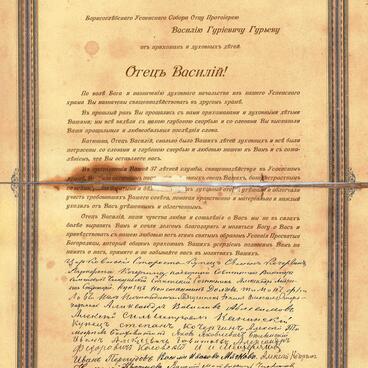Primarily in the Russian orthodox cathedrals the eastern part was separated with the chancel screen, but by the 14th century sizes of icons expanded and the image of classic iconostases started to form. In the early 16th century the first large complex iconostasis made for Dormition Cathedral in Vladimir appeared.
Traditional iconostasis included five tiers of icons: Forefather, Prophets, Festival, Deesis, Sovereign. In the centre the holy gates leading to the altar (the Kingdom of God) were placed. In the churches the iconostasis looked majestically and monumentally, as in sacred sense it was a certain synodic symbol of the Church itself.
The tradition of placing icons at home, which got its sacred sense in terms of placement and choice of icons, appeared in Russia. The religious people thought of their home as continuation of the church, its smaller incarnation.
So-called ‘red corner’ was aimed for placing icons or home iconostasis. It was situated in the eastern corner of a house. The red corner was considered a symbol of the altar transported to the smaller, home environment. The sacred place was decorated with one or a few icons (either in the icon case of without it) on the special shelf. Elsewise the home iconostasis commissioned personally was installed.
Without any doubt, the red corner always had icons with images of the Virgin Mary and Jesus Christ, the choice of others was determined by the house owner, as a rule, they were the icons of saint patrons.
This exhibit item was made by a mahogany worker in the early 20th century. It has vertical positioning of icons in three rows. On the top is the image of Pantocrator, such iconographic type is easy to recognize by its characteristic gesture. The right hand is put in the blessing gesture, the left one holds the New Testament. In the middle is the image of Mother-of-God of Kazan (Hodigitria). On the bottom is the icon of Saint Pitirim of Tambov (1645-1698), who was a bishop of the Russian Orthodox church.



